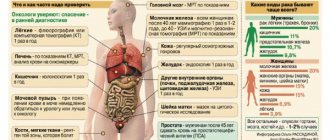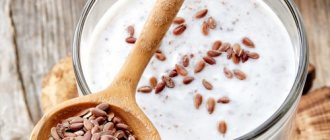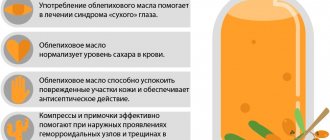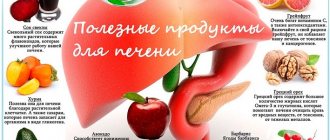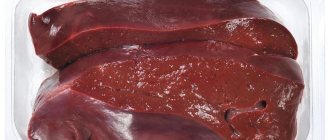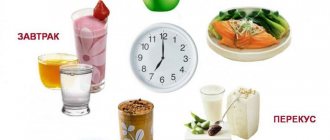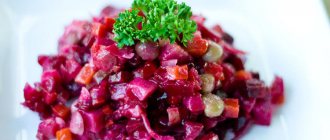There are a number of diseases that can be said to be a sign of our time. Such diseases include gastroesophageal reflux disease (GERD) , the essence of which is an increase in the production of hydrochloric acid by the stomach and its reflux into the esophagus, which causes heartburn - the most important symptom of the disease.
Many of us periodically feel an unpleasant burning sensation in the chest, but not everyone rushes to see a doctor, mistakenly believing that heartburn can be cured on their own using remedies advertised on TV.
What is GERD
Reflux is the reflux of stomach contents into the esophagus, which causes damage to its mucous membrane. In fact, with every episode of reflux, the delicate lining of the esophagus gets burned and the person experiences heartburn.
This happens either due to excess production of hydrochloric acid, or due to impaired motility of the gastrointestinal tract, when food does not leave the stomach for a long time.
Sometimes heartburn that occurs is considered a variant of the norm, because we all periodically make mistakes in nutrition. But if this is repeated often, then, unfortunately, the lower part of the esophagus suffers, the mucous membrane of which is not protected from the aggressive effects of gastric juice.
In addition, it is believed that about a third of all inflammatory diseases of the upper respiratory tract (eg, tonsillitis, pharyngitis, laryngitis) are associated with GERD. It has already been proven that the reflux of stomach contents into the esophagus and higher can provoke obstructive bronchitis and even the development of bronchial asthma.
The role of diet in esophagitis
As noted earlier, diet is one of the main methods of treating esophagitis. First of all, the patient’s diet should be balanced, that is, instead of 3 large meals, as is usually the case, it is necessary to eat 5-6 times a day, but in small portions. It is strictly not recommended to overeat, as this will negatively affect the functioning of the valve, weakening it. When the valve weakens, gastric juice enters the cavity of the esophagus, thereby irritating the mucous membrane of this organ. With regular overeating, nausea often occurs, and patients also suffer from ulceration of the esophagus and stomach walls.
As soon as you notice the first signs of illness, you should immediately seek help from a doctor. During a diagnostic examination, during which the doctor will conduct all the necessary tests, the patient will be given an accurate diagnosis. Based on this, an adequate treatment package is drawn up and a special diet is prescribed. Only the attending physician will be able to decide which foods should be excluded from the daily diet, and which, on the contrary, should be added. Ignoring the signs of pathology can provoke its transition to a chronic form.
Reasons for the development of GERD
Regurgitation (movement in the opposite direction) of the stomach contents can occur, as mentioned above, for several reasons:
- Digestive tract motility disorders
- Relaxation of the lower esophageal sphincter
- Increased aggressiveness of the gastric environment
- Decreased protective functions of the esophageal mucosa
Factors that increase the risk of developing GERD are:
- Unbalanced diet
- Quick, hurried meals
- Regular overeating
- Excessive consumption of fatty, fried, spicy foods, flour products
- Excess weight
- Smoking
- Alcohol abuse
- State of stress and depression
- Physical and emotional overload
- Pregnancy
- Taking certain medications
- Hormonal imbalances
Occasionally, reflux can also occur in healthy people when playing sports or bending the body forward immediately after eating, when wearing tight clothes or tightly tightened belts and corsets, and also at night.
Drinking regime
Compliance with the drinking regime is one of the main conditions of the diet during GERD. You must consume at least 1.5-2 liters of clean filtered water per day. If a person is not used to drinking this amount of liquid per day, then he needs to gradually accustom his body to a new regime.
In the first 2-3 days, the patient should drink at least 4 glasses of water:
- 2 – before breakfast;
- 1 – before lunch;
- 1 – before dinner.
You can achieve the desired result using this scheme in 2 weeks. Drink water 30 minutes before. before meals and 60 minutes later. after meal. In this case, the liquid will not have a negative effect on the digestive process. If desired, still mineral water can be replaced with any permitted drink.
Symptoms of GERD
GERD is quite difficult to diagnose because it has many manifestations and forms.
Symptoms of gastroesophageal reflux disease are usually divided into gastroenterological (related to the gastrointestinal tract):
- Heartburn
- Belching
- Bad taste in the mouth
- Bloating
- Feeling of heaviness in the stomach after eating;
And extraesophageal (at first glance not related to the esophagus), namely:
- Pain behind the sternum, which can be confused with pain in the heart
- Tachycardia (rapid heartbeat)
- Arrhythmia
- Dyspnea
- Stomatitis
- Erosion of tooth enamel, caries
- Hoarseness of voice
- Feeling of a lump in the throat
- Dry mouth
- Prolonged runny nose
- Chronic cough
- Bronchospasm
Treatment of the disease at home
Modern medicine associates the development of reflux disease with the activity of Helicobacter - microorganisms that cause ulcers. Therefore, you will have to remove drinks such as coffee, tea, Coca-Cola (anything that contains caffeine), as well as juices and milk from your diet, since they increase the acidity of the stomach. Traditional medicine recommends drinking cold cow's milk, which supposedly helps reduce stomach acidity. But it is very difficult to digest, and this only worsens the symptoms of the disease. So this folk remedy does not work.
In addition, reflux requires limiting other foods. These are tomatoes, peppers, onions, garlic, almost all spices, since they also have a negative effect on the stomach.
Reflux disease means that you need to exclude fried and spicy foods, oil, some vegetables (like radishes), and chocolate from your diet. Alcohol should not be taken in any form. And although dry red wines are generally considered a healthy product, people with reflux disease should not drink them either.
Very often, symptoms of the disease appear after overeating, so you need to eat often, but in small portions. In this case, no specific treatment is even needed. It is enough to regularly drink alkaline mineral waters (but only of good quality and in the absence of contraindications). It also happens that the symptoms are caused by an uncomfortable position of the head during sleep, that is, in this case, a very low position. In this case, you will have to reconsider your habits.
Symptoms of GERD with esophagitis also appear during high physical activity, especially those associated with frequent bending of the body. In this case, treatment is also not necessary, but you will have to give up too fatty foods and reduce the amount of drinking.
Importance of Nutrition for GERD
Nutrition and lifestyle are the most important factors in both the development and prevention of GERD. This is an integral part of the treatment of the disease, since the reasons for the development of GERD are most often dietary errors. Only changes in lifestyle and nutrition in combination with drug support can achieve significant success in the treatment of GERD.
Any food causes the secretion of gastric juice; only some nutrients have a weak or moderate effect, while others have a strong effect. If the same product is prepared in different ways, its effect on the stomach will also differ.
A striking example: a piece of meat goulash causes a strong secretion of gastric juice, and a piece of meatball causes a weak secretion; liquid and mushy food quickly leaves the stomach, and hard or poorly chewed food lingers in it for a long time. Therefore, in nutrition for GERD, all such points must be taken into account and observed.
How long should you stick to table No. 1a?
Gastroenterologists advise people suffering from GERD to adhere to table No. 1a constantly. If the patient does not have the desire to eat regularly according to the method developed by Pevzner, then the nutritional system is practiced periodically at times of exacerbation of the disease. In this case, the duration of the diet is 10-14 days.
For GERD, diet table 1 is indicated
After the exacerbation has entered the remission stage, you can move on to table No. 1b. This is a more balanced and challenging diet.
How to eat when you have GERD
Nutrition for GERD is designed to solve at least two important problems: to eliminate excessive production of hydrochloric acid and to prevent the reflux of stomach contents into the esophagus.
It is known that overstretching the walls of the stomach during a heavy meal causes increased secretion of gastric juice. Therefore, you need to eat often and in small portions - 4-5 times a day in small portions and in no case overeat.
The last meal is no less than 3 hours before bedtime; eating at night is strictly forbidden! It is also impossible to experience an acute feeling of hunger, so a regular diet is important. If you feel hungry, you need to immediately have something light to eat.
After eating, it is better to walk or stand, but do not lie down - this will compress the stomach and its contents will easily fall into the esophagus. The temperature of the food is warm; too hot or cold is harmful in this case. It is important that clothing and accessories (belts, belts) do not put pressure on the chest and abdomen, since an increase in pressure in the abdominal cavity automatically causes pressure on the stomach and provokes reflux.
Diet according to Pevzner
When diagnosing GERD, the patient is assigned to table No. 1. It is necessary to observe it during the period of exacerbation or during the initial detection of the disease. Duration – 1 week. The menu includes gentle dishes that can have minimal impact on the inflamed esophageal mucosa. This promotes accelerated healing and scarring of the resulting ulcers.
Allowed foods can be boiled or steamed. Dishes are served pureed or liquid. Serving hot or cold is prohibited: food must be warm. The patient is served steamed omelettes, jelly, soups, and various cereals. Meals for GERD are divided - every 3 hours in small portions. The diet for GERD with esophagitis and high acidity of gastric juice has some differences.
If the disease is complicated by the development of esophagitis, then the patient’s food is served exclusively pureed. This solves the typical problem of dysphagia for this form of the disease (pain when swallowing, food getting stuck in the throat). For breakfast, it is recommended to serve porridge and warm teas; kefir is ideal for an afternoon snack. For lunch - puree soup. Boiled vegetables can be garnished with mashed potatoes, first crushed using a blender.
With a combined course of GERD and gastritis, in which acidity is increased, a gentle diet is necessary. Sweets, spices, fatty/spicy foods, and carbonated drinks are strictly prohibited. The menu must be agreed with the attending physician.
Advice! For severe heartburn, the menu should include rice, baked apples, and jelly.
During the period of exacerbation of GERD, in addition to taking medications, it is necessary to follow a strict diet. The patient is allowed porridge cooked in water and other boiled dishes. You need to follow it for one to two weeks, until your overall well-being improves.
Sample daily menu:
Diet for reflux esophagitis + menu
- breakfast - porridge and rosehip decoction;
- second breakfast - cottage cheese;
- lunch - soup, boiled breast with a side dish of boiled vegetables;
- afternoon snack - vegetable salad of boiled beets with carrots, seasoned with vegetable oil;
- dinner - vegetable stew or cottage cheese casserole.
During the period of remission of the disease, the list of permitted products can be slightly expanded. For example, a patient can eat sweets, but in limited quantities. Fatty dishes and foods are still prohibited.
Sample menu for the day:
- breakfast – cottage cheese with sour cream, tea, dry biscuits;
- second breakfast - sweet berry jelly;
- lunch - soup with low-fat broth, boiled meat with side dish;
- afternoon snack – sweet juice with biscuits;
- dinner - steamed cutlets, garnished with vegetable stew.
Prevention of exacerbation of GERD consists of following the basic principles of dietary nutrition. For breakfast, you should serve porridge, adding raisins to it for variety and improved taste. Second breakfast - biscuits and permitted drinks. Cereal soups, lean meats, and vegetable salads are good for lunch. Afternoon snack – a decoction of rose hips and jelly. You can take fish to prepare dishes for dinner.
Sample menu for a week for GERD
The list of products that are planned to be used when drawing up the menu must be agreed upon with the attending physician and nutritionist. Sample daily menu for the classic course of gastroesophageal reflux disease:
- breakfast - pumpkin pudding with potatoes, topped with sour cream sauce, a little steam omelet, herbal infusion, biscuits;
- second breakfast - vinaigrette, a piece of yesterday's bread made from wheat flour, low-fat yogurt, jelly;
- lunch – noodle soup and vegetables, rice porridge, chicken baked in foil, sweet tea;
- afternoon snack - cottage cheese casserole, permitted drink;
- dinner - boiled fish with vegetable salad, a piece of stale white bread, compote;
- before bed – jelly.
Menu for GERD
Preference should be given to liquid, crushed or pureed dishes that are mechanically and chemically gentle on the gastrointestinal tract. Rough food will cause irritation and worsen the condition.
In nutrition, it is important to use foods that are easily and quickly digested and absorbed by the body. This primarily applies to protein foods, since they are more difficult to break down and stay in the stomach longer than others. Therefore, preference is given to light, but complete protein: lean meats, lean fish, dairy products, eggs, protein mixtures.
Diso Nutrimoon
Protein for treatment and rehabilitation
An easily digestible, tasteless protein mixture, a source of proteins and amino acids necessary for the body to fight illness, recover from injuries, illnesses and operations.
More details
It is good to include boiled porridges, milk soups, first courses with vegetable broth or weak broth in the menu. Fats slow down the evacuation of food from the stomach to the intestines, so their amount in the diet is limited as much as possible.
A categorical ban on:
- fatty food
- salty food
- sour food
- spicy food
- smoked meats
- marinades
- semi-finished products
- canned food
- foods that irritate the stomach
- cabbage
- radish
- onion
- garlic
- tomatoes
- sparkling waters and drinks
- coffee
- strong tea
- chocolate
- alcohol
- mint
The menu for GERD does not include fresh pastries, fresh bread, legumes, corn, or mushrooms.
Food is prepared without spices with minimal addition of salt. The amount of sugar and other simple carbohydrates (confectionery, sweets, ice cream) also needs to be reduced. Dishes are steamed, boiled or baked.
List of recommended products
- lean meat (chicken, turkey, beef)
- lean fish (pike perch, hake)
- eggs, preferably soft-boiled or in the form of omelettes
- low-fat dairy products (milk, non-sour cottage cheese, non-sour kefir)
- Nutrimun protein mixture
- boiled or stewed vegetables (potatoes, beets, carrots)
- well-cooked cereals (semolina, buckwheat, oatmeal, rice)
- pasta
- yesterday's white bread
- non-acidic fruits (apples, bananas) and berries, fresh or in the form of jelly, compotes
- still alkaline mineral water
List of prohibited products
A diet for GERD with high acidity - low levels accompany this pathology in exceptional cases - prohibits many foods. But first of all, you need to give up the following:
- Drinks – alcohol-containing, strongly brewed black teas, cocoa, coffee, any soda, drinks with mint flavor and prepared on its basis.
- The dishes are spicy in taste.
- Chocolate.
- Vegetables and fruits that can cause heartburn. The list is individual in each case.
- Dairy products with high fat content - milk (more than 2%), yoghurts, cheeses, cottage cheese, cream.
- Roasted meat products.
- Fried foods, in particular potatoes.
- Fast food.
The Importance of Protein in GERD
Protein in the diet for GERD is of utmost importance. Its amount in the diet is usually increased, and at the expense of complete protein of animal origin. This, first of all, ensures the healing processes of damaged areas of the mucous membrane.
Research data prove that easily digestible protein foods reduce the aggressiveness of gastric juice and increase the tone of the esophageal sphincter, which speeds up recovery and improves well-being.
The important point is that the decisive role is not the quantity, but the quality of the protein. Traditional protein products (meat, fish), even boiled or baked pieces, tend to increase the production of gastric juice.
Therefore, preference should be given to chopped meat and fish products (meatballs, soufflés, casseroles), as well as dairy products and dry composite protein mixtures.
Fully or partially limited products
- Fatty and stringy meat, fatty duck and goose, meat and fish broths, canned food, smoked meats, pickled vegetables.
- Salted and pickled vegetables, mushrooms in any form.
- Sour and fiber-rich fruits.
- Fried dishes, mushroom decoctions, tomato and mushroom sauces, meat and fish stewed in their own juice.
- Fresh bread, puff pastry and pastry.
- Tomatoes, onions, mushrooms, radishes, white cabbage, radishes, sorrel, cucumbers, legumes.
- Spices and seasonings, mayonnaise, ketchup, tomato paste.
- Millet, barley and pearl barley, pasta are considered coarse and difficult to digest, so they are excluded from the diet.
- Fermented milk products are highly acidic, which can cause heartburn.
- Sour juices (lemon, currant, tomato), carbonated drinks, alcohol, coffee, strong tea.
- The list of products may expand depending on individual tolerance.
Table of prohibited products
| Proteins, g | Fats, g | Carbohydrates, g | Calories, kcal | |
Vegetables and greens | ||||
| vegetables legumes | 9,1 | 1,6 | 27,0 | 168 |
| canned vegetables | 1,5 | 0,2 | 5,5 | 30 |
| radish | 1,2 | 0,1 | 3,4 | 19 |
| white radish | 1,4 | 0,0 | 4,1 | 21 |
| black radish | 1,9 | 0,2 | 6,7 | 35 |
| turnip | 1,5 | 0,1 | 6,2 | 30 |
| asparagus | 1,9 | 0,1 | 3,1 | 20 |
| tomatoes | 0,6 | 0,2 | 4,2 | 20 |
| horseradish | 3,2 | 0,4 | 10,5 | 56 |
Fruits | ||||
| lemons | 0,9 | 0,1 | 3,0 | 16 |
Berries | ||||
| grape | 0,6 | 0,2 | 16,8 | 65 |
| gooseberry | 0,7 | 0,2 | 12,0 | 43 |
| currant | 1,0 | 0,4 | 7,5 | 43 |
Nuts and dried fruits | ||||
| dates | 2,5 | 0,5 | 69,2 | 274 |
Cereals and porridges | ||||
| corn grits | 8,3 | 1,2 | 75,0 | 337 |
| pearl barley | 9,3 | 1,1 | 73,7 | 320 |
| millet cereal | 11,5 | 3,3 | 69,3 | 348 |
| barley grits | 10,4 | 1,3 | 66,3 | 324 |
Flour and pasta | ||||
| pasta | 10,4 | 1,1 | 69,7 | 337 |
Bakery products | ||||
| vysivkovy bread | 9,0 | 2,2 | 36,0 | 217 |
| oatmeal bread | 10,1 | 5,4 | 49,0 | 289 |
| bran bread | 7,5 | 1,3 | 45,2 | 227 |
| whole grain bread | 10,1 | 2,3 | 57,1 | 295 |
Confectionery | ||||
| jam | 0,3 | 0,2 | 63,0 | 263 |
| candies | 4,3 | 19,8 | 67,5 | 453 |
Ice cream | ||||
| ice cream | 3,7 | 6,9 | 22,1 | 189 |
Raw materials and seasonings | ||||
| mustard | 5,7 | 6,4 | 22,0 | 162 |
| ketchup | 1,8 | 1,0 | 22,2 | 93 |
| mayonnaise | 2,4 | 67,0 | 3,9 | 627 |
| ground black pepper | 10,4 | 3,3 | 38,7 | 251 |
| chilli | 2,0 | 0,2 | 9,5 | 40 |
| tomato sauce | 1,7 | 7,8 | 4,5 | 80 |
| spicy tomato sauce | 2,5 | 0,0 | 21,8 | 98 |
Dairy | ||||
| kefir | 3,4 | 2,0 | 4,7 | 51 |
| sour cream | 2,8 | 20,0 | 3,2 | 206 |
| curdled milk | 2,9 | 2,5 | 4,1 | 53 |
Meat products | ||||
| pork | 16,0 | 21,6 | 0,0 | 259 |
Sausages | ||||
| dry-cured sausage | 24,1 | 38,3 | 1,0 | 455 |
Bird | ||||
| smoked chicken | 27,5 | 8,2 | 0,0 | 184 |
| duck | 16,5 | 61,2 | 0,0 | 346 |
| smoked duck | 19,0 | 28,4 | 0,0 | 337 |
| goose | 16,1 | 33,3 | 0,0 | 364 |
Fish and seafood | ||||
| dried fish | 17,5 | 4,6 | 0,0 | 139 |
| smoked fish | 26,8 | 9,9 | 0,0 | 196 |
| canned fish | 17,5 | 2,0 | 0,0 | 88 |
Oils and fats | ||||
| creamy margarine | 0,5 | 82,0 | 0,0 | 745 |
| animal fat | 0,0 | 99,7 | 0,0 | 897 |
| cooking fat | 0,0 | 99,7 | 0,0 | 897 |
Alcoholic drinks | ||||
| whiskey | 0,0 | 0,0 | 0,4 | 235 |
| vodka | 0,0 | 0,0 | 0,1 | 235 |
| cognac | 0,0 | 0,0 | 0,1 | 239 |
| liquor | 0,3 | 1,1 | 17,2 | 242 |
| beer | 0,3 | 0,0 | 4,6 | 42 |
Non-alcoholic drinks | ||||
| Pepsi | 0,0 | 0,0 | 8,7 | 38 |
| sprite | 0,1 | 0,0 | 7,0 | 29 |
| green tea | 0,0 | 0,0 | 0,0 | — |
| black tea | 20,0 | 5,1 | 6,9 | 152 |
| * data is per 100 g of product | ||||
Diso Nutrimun for GERD
Nutrimun protein mixture is exactly the protein that will provide maximum benefit for GERD. Nutrimun protein is as easy as possible to digest; the amount or concentration of hydrochloric acid and gastric enzymes will not affect its absorption in any way. Using Nutrimun in your diet for GERD is the right choice because it is a complete, high-quality animal protein without harmful saturated fats and cholesterol.
What is Nutrimun
SBKS Diso Nutrimun is a milk protein concentrate that does not have a pronounced taste or smell. It does not change the usual characteristics of your favorite dishes, and at the same time enriches them with complete, easily digestible protein, which is necessary for the normal functioning of the body, improves the functional state of the digestive system, and ensures the healing process of affected areas of the mucous membrane.
How does he help?
Diso Nutrimun is 5 grams of protein per scoop, it was developed by scientists and recommended by doctors for constant use. You can add it to any dish: soups, broths, purees, soufflés, porridges, etc. You can stir Nutrimun in drinks: milk, compote, jelly and even tea.
Nutrimun is a specialized food product that increases and improves the protein part of the diet. It contains all the amino acids necessary for the body in the correct ratio to each other for better absorption and greater benefits.
Protein from the Diso Nutrimun protein mixture is not only complete and balanced in amino acid composition, it is easily broken down in the digestive tract and is easily absorbed by the body. These properties undoubtedly distinguish Diso Nutrimun from other protein-containing food products.
